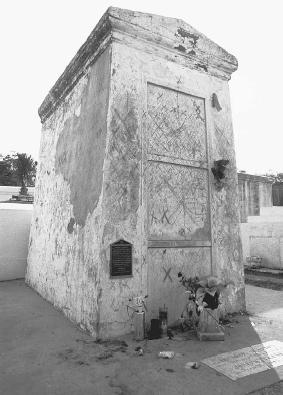Magi
Marie laveau (c. 1794–1881)
Marie Laveau succeeded Sanite Dede as the voodoo queen (high priestess) of New Orleans sometime around 1830. No one in the hierarchy of voodoo priests and priestesses disputed Laveau's rise to that position, for it was widely known that she was gifted with powers of sorcery and the ability to fashion charms of unfailing efficacy.
Laveau was a Creole freewoman, and by profession a hair dresser. Her prestige among the white establishment was assured when the son of a wealthy New Orleans merchant was arrested for a crime of which he was innocent, although there was much false evidence against him. His father appealed to the voodoo high priestess to put a spell on the judge to cause him to find the young man not guilty.
Laveau took three Guinea peppers and placed them in her mouth before she went to the cathedral to pray. Although she was the recognized voodoo priestess of New Orleans, she did not find her beliefs incompatible with Catholicism and Christian charity, and she attended Mass daily. On that particular day, she knelt at the altar for several hours, praying for the young man to be found innocent. Then, later, by a ruse, she managed to enter the courtroom and place the peppers under the judge's seat. The judge found the prisoner not guilty, and Marie Laveau was handsomely rewarded by the merchant.
Laveau greatly popularized voodoo by revising some of the rituals until they became her unique mixture of West Indian and African tribal religions and Roman Catholicism. She invited politicians and police officials to the public ceremonies that she conducted

For many years, legend had it that Marie Laveau had discovered the secrets of immortality and that she lived to be nearly 200 years old. Some speak in hushed whispers that she is still alive, conducting voodoo rituals in the secret shadows of New Orleans. Such a legend quite likely began when Laveau cleverly passed the position of high priestess to her daughter, who greatly resembled her, at a strategic time when she had just begun to age. Laveau retired from public appearances to continue to conduct the intricate network of spies and informants she had built up while her daughter assumed the public persona of Marie Laveau, voodoo queen of New Orleans. Because she now appeared ageless and could sometimes be seen in more than one place at a time, her power and mystery grew ever stronger among her voodoo worshippers and the elite white community, as well. As far as it can be determined, Marie Laveau died in New Orleans on June 15, 1881.

Comment about this article, ask questions, or add new information about this topic: